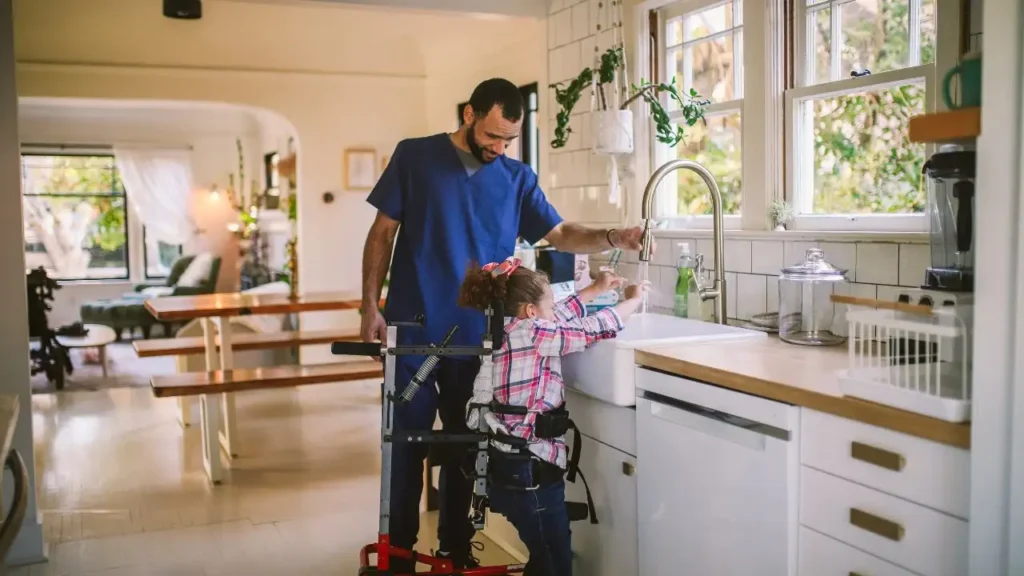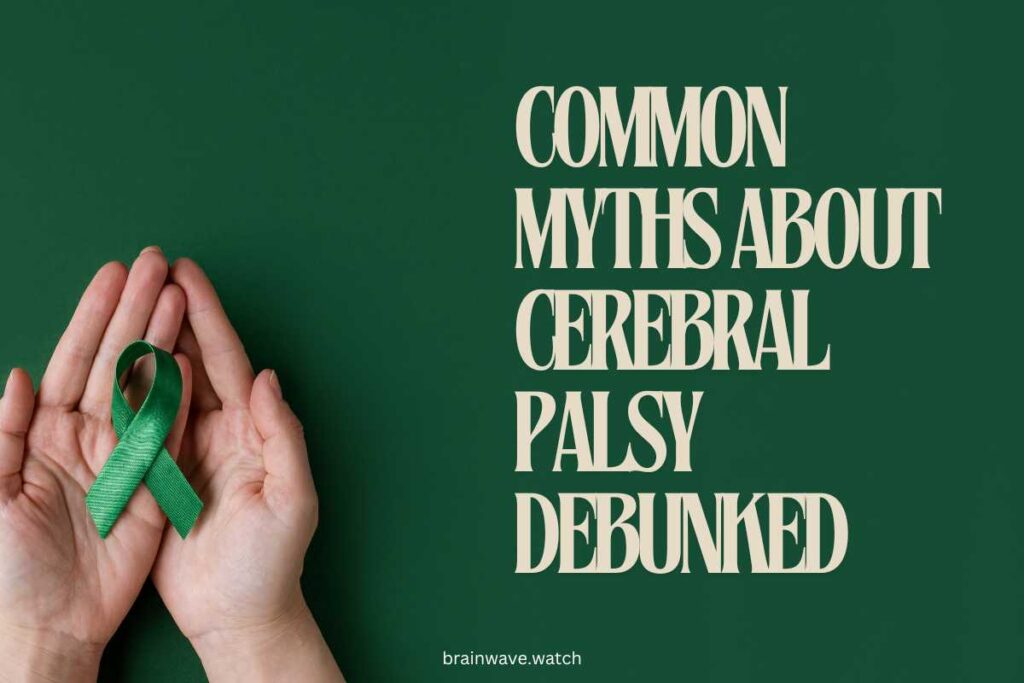Cerebral palsy is a group of disorders affecting movement and posture, resulting from abnormal brain development or damage to the developing brain. This condition impacts muscle control and coordination, making daily activities challenging.
The primary causes of cerebral palsy include factors such as lack of oxygen during birth, infections during pregnancy, and head injuries in early childhood. These events can disrupt normal brain development, leading to various motor impairments.
Common symptoms of cerebral palsy vary widely among individuals. They may experience muscle stiffness, difficulty with coordination, or challenges with balance. Some may also face speech and intellectual impairments.
According to the Centers for Disease Control and Prevention (CDC), approximately 1 in 323 children is diagnosed with cerebral palsy. This prevalence highlights the importance of understanding this condition and its impact on those affected.
What Are Neuromuscular Diseases
Neuromuscular diseases are a group of disorders that affect the way the brain communicates with the muscles. These conditions can lead to muscle weakness, atrophy, and impaired movement.
They stem from problems with the motor neurons, which are responsible for transmitting signals from the brain to the muscles.
Some notable examples include amyotrophic lateral sclerosis (ALS), muscular dystrophy, and myasthenia gravis. Each of these diseases presents unique challenges and affects individuals differently.
The symptoms of neuromuscular diseases often manifest as muscle weakness, fatigue, and difficulty with coordination. Individuals may struggle with everyday tasks, such as walking, lifting objects, or even breathing. The impact on the body can be profound, leading to a reduced quality of life and the need for supportive care.
Classifying Cerebral Palsy
Classifying cerebral palsy involves assessing various criteria that reflect the nature and severity of the condition.
Primarily, it is categorized based on the type of movement disorder, which can include spastic, dyskinetic, ataxic, and mixed types. Each type is defined by the specific motor functions that are affected.
The classification may consider the level of severity, which ranges from mild to severe, impacting the individual’s daily activities.
There are several common misconceptions surrounding cerebral palsy. One prevalent myth is that it only affects mobility. In reality, it can also impact speech, cognition, and sensory functions. Another misconception is that all individuals with cerebral palsy have the same symptoms.
This is far from true, as the condition presents a wide spectrum of challenges and abilities among those affected. Understanding these classifications and dispelling myths can lead to better awareness and support for individuals with cerebral palsy.
Is Cerebral Palsy a Neuromuscular Disease?
Current medical perspectives indicate that cerebral palsy is often classified as a neuromuscular disorder. This classification stems from the condition’s impact on muscle control and movement, which are central to neuromuscular function.
Specialists recognize that cerebral palsy results from brain injuries affecting motor pathways, leading to a range of physical challenges.
Recent research findings further support this classification. Studies have shown that many individuals with cerebral palsy exhibit symptoms commonly seen in neuromuscular diseases, such as muscle weakness and spasticity.
Furthermore, advancements in neuroimaging techniques have provided insights into the brain’s structural and functional changes in affected individuals. This research emphasizes the complexity of cerebral palsy and how it overlaps with other neuromuscular conditions.
As medical understanding evolves, the classification of cerebral palsy continues to spark discussions within the healthcare community. This ongoing dialogue is crucial for improving diagnostic accuracy and developing tailored treatment strategies.
Comparing Cerebral Palsy With Other Neuromuscular Diseases
Cerebral palsy and other neuromuscular diseases share several similarities, primarily in their effects on muscle control and movement. Both conditions can lead to muscle weakness, spasms, and difficulties in coordination.
The underlying causes differ significantly. Cerebral palsy results from brain damage during development, whereas neuromuscular diseases like muscular dystrophy stem from genetic or inherited factors affecting muscle tissue directly.
A case study of a child with cerebral palsy reveals the unique challenges faced compared to a child diagnosed with Duchenne muscular dystrophy. The child with cerebral palsy experiences spasticity due to abnormal brain signals, impacting posture and movement. In contrast, the child with muscular dystrophy suffers progressive muscle degeneration, leading to a gradual loss of mobility over time.
These distinctions emphasize the importance of accurate diagnosis and tailored treatment plans. While similarities exist, understanding the differences is crucial for effective management of each condition.
Impact of Classification on Treatment
The classification of cerebral palsy significantly influences the treatment approach. Common treatment options include physical therapy, occupational therapy, speech therapy, and medications to manage symptoms like muscle stiffness. In some cases, surgery may be necessary to improve mobility or correct physical deformities.
The classification of cerebral palsy helps healthcare providers tailor these treatments to the individual’s specific needs. For instance, a child diagnosed with spastic cerebral palsy may benefit more from targeted physical therapy to enhance mobility.
On the other hand, a child with ataxic cerebral palsy might require different strategies to address balance and coordination issues.
Understanding the type of cerebral palsy a patient has allows for more effective interventions. It empowers families to make informed choices about the best therapies and resources available, ensuring a comprehensive approach to improving the quality of life for those affected.
Role of Early Diagnosis
Early diagnosis of cerebral palsy plays a crucial role in effective intervention and management. Identifying the condition promptly allows families to access appropriate therapies sooner.
This can lead to improved developmental outcomes, as interventions such as physical and occupational therapy can be tailored to the child’s needs right from the start. Early support can make a significant difference in mobility, communication, and overall quality of life.
Despite these benefits, diagnosing cerebral palsy presents its own set of challenges. Symptoms can be subtle in infants and may not be immediately apparent. Many parents may notice developmental delays but might not connect them to cerebral palsy.
The condition has various forms, which can complicate diagnosis. Healthcare professionals often rely on a combination of clinical assessments and observations over time, making the process lengthy. This uncertainty can lead to delays in treatment, impacting the child’s development.
Support Systems for Cerebral Palsy
Family and community support play a vital role in the lives of individuals with cerebral palsy. Families often act as the primary advocates, ensuring their loved ones receive the necessary care and resources.
Emotional support from family members helps foster resilience and strengthens social connections. Community involvement can also make a significant difference, providing a network of shared experiences and understanding.
Various resources are available to assist families navigating the complexities of cerebral palsy. Organizations such as the Cerebral Palsy Foundation offer valuable information and support services. Local support groups create safe spaces for families to share their challenges and successes.
Healthcare providers can connect families to therapy programs, educational resources, and financial assistance options. Accessing these resources is essential for optimizing the care and support available to individuals with cerebral palsy.
Advancements in Cerebral Palsy Research
Recent breakthroughs in cerebral palsy research are paving the way for improved treatment options and a better understanding of the condition.
Innovative therapies, such as neuroplasticity-based interventions, focus on enhancing brain function and motor skills.
Studies have shown promise in using stem cell therapy to promote recovery and improve mobility in children with cerebral palsy. These advancements could significantly impact the quality of life for many individuals.
Looking ahead, researchers are focusing on exploring genetic factors that contribute to cerebral palsy. Identifying these factors may lead to targeted therapies that address the root causes of the condition.
Advancements in technology, such as wearable devices, are being investigated to monitor progress and tailor rehabilitation programs.
These future directions hold the potential to revolutionize how cerebral palsy is understood and treated, ultimately benefiting countless individuals and their families.
Public Perceptions of Cerebral Palsy
Public perceptions of cerebral palsy often stem from common stereotypes. Many people mistakenly believe that individuals with this condition cannot lead active lives or achieve independence. Such views can be limiting and fail to recognize the diverse abilities and potential of those affected by cerebral palsy.
Efforts to change these perceptions are underway. Campaigns such as “Cerebral Palsy Awareness Month” aim to educate the public about the realities of living with cerebral palsy.
These initiatives provide platforms for individuals to share their stories, showcasing their achievements and daily experiences. Social media plays a vital role in spreading awareness, as personal narratives challenge misconceptions and foster empathy.
Organizations are also working to create inclusive environments that promote understanding and acceptance. Through workshops, educational programs, and community events, the focus shifts from limitations to possibilities.
Changing perceptions is crucial, as it helps to create a more supportive society for those with cerebral palsy, allowing them to thrive and succeed.
Advocacy for Individuals with Cerebral Palsy
Advocacy plays a crucial role in improving the lives of individuals with cerebral palsy. It raises awareness about the challenges they face and promotes their rights and needs.
When advocates speak up, they help dispel myths, encourage inclusion, and foster understanding in communities. This support can lead to better resources, improved healthcare options, and enhanced educational opportunities.
Getting involved in advocacy is easier than you might think. Start by educating yourself about cerebral palsy and its impact. Join local or national organizations that focus on advocacy and awareness.
These groups often host events, workshops, and campaigns where you can volunteer your time or lend your voice. Social media is another powerful tool; share stories, articles, and personal experiences to spread awareness and inspire others.
Every effort counts. By advocating for individuals with cerebral palsy, you contribute to a more inclusive society where everyone can thrive. Your voice can make a difference.
Educational Initiatives for Cerebral Palsy Awareness
Awareness is key to understanding cerebral palsy, and various educational initiatives aim to promote this understanding.
Programs and workshops focused on cerebral palsy provide valuable information to families, educators, and healthcare professionals. For instance, organizations like the Cerebral Palsy Foundation and United Cerebral Palsy offer workshops that cover topics ranging from early intervention strategies to adaptive technologies. These programs empower participants with knowledge and resources.
The impact of these initiatives extends beyond individual learning. Communities benefit significantly as awareness grows. When more people understand cerebral palsy, misconceptions and stereotypes begin to fade.
This leads to increased support for inclusive practices in schools and workplaces. For example, schools that implement awareness programs often see a more accepting environment for children with cerebral palsy, fostering friendships and collaboration among students.
Ultimately, educational initiatives create a ripple effect, enhancing the quality of life for individuals with cerebral palsy and their families. By spreading knowledge, communities can cultivate a more inclusive atmosphere for everyone.
Global Perspectives on Cerebral Palsy
Cerebral palsy is viewed and treated differently across the globe. In many developed countries, advanced medical care and early intervention strategies are emphasized. These approaches focus on therapy, surgery, and support to enhance mobility and independence.
Conversely, in some developing nations, limited resources can hinder access to necessary treatments and therapies. Awareness and education about cerebral palsy can also vary significantly, affecting how communities perceive and support individuals with the condition.
Global initiatives are crucial in addressing these disparities. Organizations like the World Health Organization and UNICEF work to improve awareness and treatment standards worldwide.
They promote guidelines that aim to enhance healthcare systems and provide training for medical professionals. These efforts help create uniformity in the understanding and management of cerebral palsy.
International collaborations also focus on sharing knowledge and resources. By uniting efforts, countries can better support individuals with cerebral palsy, ensuring they receive the care and opportunities they deserve.
Final Thoughts
Cerebral palsy presents unique challenges and varies widely among individuals. This condition is often debated in terms of its classification as a neuromuscular disease, with ongoing research continuously shaping our understanding. It’s essential to recognize the importance of early diagnosis and the role it plays in effective treatment options.
As we deepen our understanding of cerebral palsy, staying informed is vital. Continuous learning about this condition and its implications can foster greater awareness and support. Engaging with community resources and educational initiatives can make a significant difference in the lives of those affected. Keep exploring and advocating for knowledge—it truly matters.







